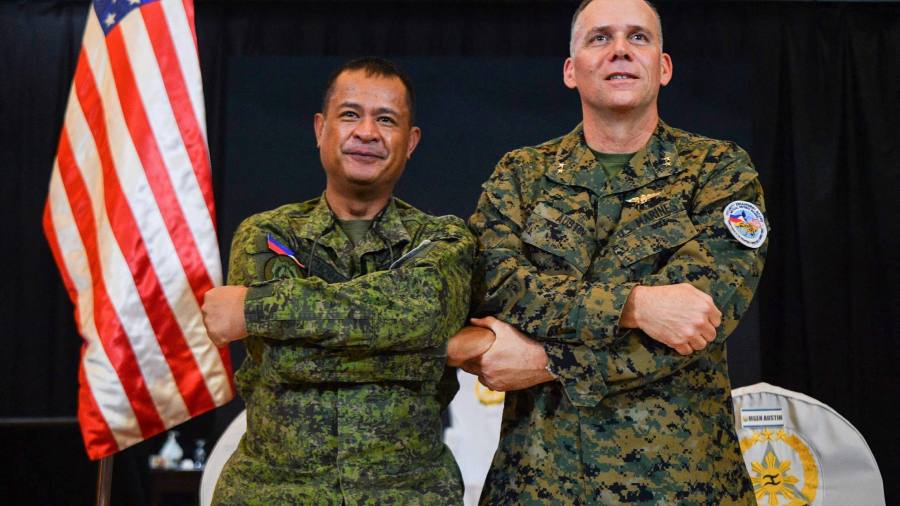The US and the Philippines have kicked off their largest joint military exercise in 31 years, highlighting the two countries’ efforts to revitalise their alliance to deal with an increasingly assertive China.
Although Balikatan, the two militaries’ annual flagship drill, had been scheduled for months, its opening on Tuesday — a day after China wrapped up three-day manoeuvres around Taiwan — underscored the importance of the Philippines in any regional conflict.
The US and Philippine foreign and defence ministers are also due to hold the first so-called 2+2 meeting in seven years in Washington on Tuesday, another reflection of the allies’ significant increase in security co-operation.
About 12,000 US forces, 5,400 Philippine military personnel and more than 100 Australian forces will participate in the Balikatan manoeuvres, double the ranks of previous years’ exercises, as first reported by the Financial Times.
As part of the drills, which are scheduled to run through April 28, US and Philippine forces will sink a ship off the west coast of Luzon in an unprecedented offshore live-fire exercise.
“We will hit it with all the weapons systems that we have, ground, navy and air,” said Colonel Michael Logico, director of the Philippine military’s Joint and Combined Training Center.
Logico emphasised that the drills were aimed at deterring other countries from invading the Philippines.
“We are not provoking anybody by simply exercising,” he said.
However, Beijing may interpret the drills as targeting its military activity in the region. The ship-sinking live-fire portion will take place within Philippine territorial waters at the rim of the South China Sea, which Beijing claims almost in its entirety.
Other parts of the exercises will include air assault drills on islands in the vicinity of northern Luzon, an area Philippine and US military officials said would be a critical battleground in a conflict over Taiwan.
The forces will also practice expeditionary advanced base operations — in which small units are injected into territory the enemy can hit with missiles — and coastal defence.
Those classes are scheduled to take place at Lal-lo airport, a Philippine air force base in northern Luzon and one of the additional Philippine bases to which US forces will soon receive access under a 2014 enhanced defence co-operation agreement (EDCA).
The US has not had bases of its own in the Philippines, its oldest Asian ally, since the island nation’s Senate blocked the extension of a bilateral military bases agreement in 1991.
Philippine president Ferdinand Marcos Jr agreed to designate Lal-lo and three other bases in the country as facilities where US forces could preposition equipment and rotate personnel, in addition to five existing locations.
Marcos’s predecessor Rodrigo Duterte had blocked implementation of the EDCA as he pursued closer relations with China.
Although Marcos is trying to carefully balance his renewed commitment to the US alliance with his country’s ties with China, Philippine officials said concerns over Beijing’s increasingly aggressive stance in the South China Sea and around Taiwan made him determined to strengthen the bond with Washington.
Read the full article here



